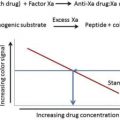The periprocedural management of patients on direct oral anticoagulants (DOACs) is a common but potentially challenging clinical problem because there are few prospective studies to guide clinical decisions. Retrospective analyses from randomized trials and observational data suggest that DOACs can be managed in a standardized manner, based on surgical and patient characteristics, that does not result in excess major bleeding or thrombosis. In a case-based manner, this article presents a perioperative DOAC management algorithm and reviews the available and emerging evidence supporting the safety and efficacy of this approach. A free online clinical guidance tool is available from Thrombosis Canada that includes the proposed management algorithm.
Key points
- •
Not all procedures require anticoagulants to be held (eg, minor dental and skin procedures, cataract extraction, selected cardiac device implantation).
- •
Bridging anticoagulation does not seem to mitigate the risk for perioperative thromboembolism, but is associated with an increase in major bleeding; consequently, bridging anticoagulation is not routinely recommended for DOAC-treated patients during treatment interruption for an elective surgery/procedure.
- •
DOACs should be held for 1 to 4 days preprocedure, with the interruption interval depending on the DOAC, patient renal function, and surgery/procedure bleeding risk.
- •
Postoperative resumption of DOACs should take into account their rapid onset of action (1–3 hours postingestion), and can be restarted approximately 24 hours after low-bleed-risk and 48 to 72 hours after high-bleed-risk procedures.
- •
With urgent surgery, there is no evidence for more bleeding among DOAC-treated compared with warfarin-treated patients.
Introduction
There are an estimated 33.5 million people worldwide with atrial fibrillation (AF), and an additional 5 million cases are diagnosed annually. Because AF is more common among the elderly, the North American incidence is expected to rise as the population ages. Most patients with AF should receive an oral anticoagulant to prevent stroke, and practice guidelines recommend the direct oral anticoagulants (DOACs) in preference to warfarin.
Approximately 10% of patients on anticoagulants require treatment interruption annually for a surgery or invasive procedure. It is important that such treatment interruptions balance the procedure-related bleeding risk against the patient’s thrombotic risk. Thus, excess bleeding may occur if an anticoagulant is not interrupted soon enough or restarted too quickly postprocedure ; conversely, extended interruption of anticoagulants may expose patients to an increased risk for thrombotic complications. Of concern, observational studies have shown that periprocedural management of anticoagulants is variable and often not in keeping with guideline recommendations.
Clinical guidelines are available for the periprocedural management of warfarin (and other vitamin K antagonists) but are lacking for patients who are receiving DOACs, which comprise dabigatran, rivaroxaban, apixaban, and edoxaban. There are key differences between the DOACs and warfarin related to elimination half-life (10–14 hours for DOACs vs 38–42 hours for warfarin), dependence on renal elimination (25%–75% renal clearance for DOACs vs nonrenal clearance for warfarin), and peak action after oral intake (1–3 hours for DOACs vs 4–6 days for warfarin), which necessitate different periprocedural management approaches.
Using a case-based approach, this article provides practical clinical guidance for the periprocedural management of patients who are receiving a DOAC and require an elective or urgent surgery/procedure. Current practice recommendations are based on low-quality evidence derived mainly from DOAC pharmacokinetic data ( Table 1 ), retrospective studies, and patient registries. However, there are emerging prospective studies assessing the safety of standardized periprocedural DOAC management protocols, including the one recommended in this text. In addition, the PAUSE trial ( NCT02228798 ) will assess standardized, DOAC-specific management protocols in approximately 3000 patients who are receiving a DOAC.
| Target | Dabigatran | Rivaroxaban | Apixaban | Edoxaban |
|---|---|---|---|---|
| Factor IIa (Thrombin) | Factor Xa | Factor Xa | Factor Xa | |
| Dosing (atrial fibrillation) | 150 mg bid a | 20 mg daily b | 5 mg bid c | 60 mg daily d |
| Cmax | 1–2 h | 2–4 h | 3–4 h | 1–2 h |
a 110 mg bid if older than age 80 or if additional risk factors for bleeding.
b 15 mg od if creatinine clearance 30 to 50.
c 2.5 mg bid if two of the following: age greater than 80, serum creatinine greater than 133, weight less than 60 kg.
d 30 mg daily if creatinine clearance 30 to 50 or weight less than 60 kg.
Introduction
There are an estimated 33.5 million people worldwide with atrial fibrillation (AF), and an additional 5 million cases are diagnosed annually. Because AF is more common among the elderly, the North American incidence is expected to rise as the population ages. Most patients with AF should receive an oral anticoagulant to prevent stroke, and practice guidelines recommend the direct oral anticoagulants (DOACs) in preference to warfarin.
Approximately 10% of patients on anticoagulants require treatment interruption annually for a surgery or invasive procedure. It is important that such treatment interruptions balance the procedure-related bleeding risk against the patient’s thrombotic risk. Thus, excess bleeding may occur if an anticoagulant is not interrupted soon enough or restarted too quickly postprocedure ; conversely, extended interruption of anticoagulants may expose patients to an increased risk for thrombotic complications. Of concern, observational studies have shown that periprocedural management of anticoagulants is variable and often not in keeping with guideline recommendations.
Clinical guidelines are available for the periprocedural management of warfarin (and other vitamin K antagonists) but are lacking for patients who are receiving DOACs, which comprise dabigatran, rivaroxaban, apixaban, and edoxaban. There are key differences between the DOACs and warfarin related to elimination half-life (10–14 hours for DOACs vs 38–42 hours for warfarin), dependence on renal elimination (25%–75% renal clearance for DOACs vs nonrenal clearance for warfarin), and peak action after oral intake (1–3 hours for DOACs vs 4–6 days for warfarin), which necessitate different periprocedural management approaches.
Using a case-based approach, this article provides practical clinical guidance for the periprocedural management of patients who are receiving a DOAC and require an elective or urgent surgery/procedure. Current practice recommendations are based on low-quality evidence derived mainly from DOAC pharmacokinetic data ( Table 1 ), retrospective studies, and patient registries. However, there are emerging prospective studies assessing the safety of standardized periprocedural DOAC management protocols, including the one recommended in this text. In addition, the PAUSE trial ( NCT02228798 ) will assess standardized, DOAC-specific management protocols in approximately 3000 patients who are receiving a DOAC.
| Target | Dabigatran | Rivaroxaban | Apixaban | Edoxaban |
|---|---|---|---|---|
| Factor IIa (Thrombin) | Factor Xa | Factor Xa | Factor Xa | |
| Dosing (atrial fibrillation) | 150 mg bid a | 20 mg daily b | 5 mg bid c | 60 mg daily d |
| Cmax | 1–2 h | 2–4 h | 3–4 h | 1–2 h |
a 110 mg bid if older than age 80 or if additional risk factors for bleeding.
b 15 mg od if creatinine clearance 30 to 50.
c 2.5 mg bid if two of the following: age greater than 80, serum creatinine greater than 133, weight less than 60 kg.
d 30 mg daily if creatinine clearance 30 to 50 or weight less than 60 kg.
Case 1: minimal-bleed-risk procedure
A 78-year-old woman with AF, hypertension, mildly impaired left ventricular function, and a transient ischemic attack 7 months ago is scheduled to have multiple teeth extracted. Her estimated creatinine clearance is 56 mL/min. She takes rivaroxaban, 20 mg daily with breakfast, for stroke prevention. Her dentist asks you if the rivaroxaban can be continued through the procedure.
When considering withholding anticoagulants, one should balance the risk of bleeding associated with a procedure and the patient’s risk for thromboembolic complications while off anticoagulants. Patients’ risk for procedure-related bleeding is stratified as minimal, low, and high bleed risk based on observed bleeding rates postoperatively for patients not on anticoagulants ( Table 2 ). Neuraxial blocks or anesthesia are somewhat unique procedures because they are associated with a low absolute risk of bleeding but are managed as a high-bleed-risk procedure because of the potentially devastating consequence, namely lower limb paralysis, if epidural bleeding occurs.
| Procedural Bleeding Risk | ||
|---|---|---|
| Minimal | Low | High |
|
|
|
a Refers to selected patients on warfarin; for patients on DOACs, alternate approaches may be equally reasonable.
Data from randomized trials and observational studies involving the periprocedural management of patients on warfarin inform practice for patients undergoing minimal-bleed-risk procedures, including minor dental and dermatologic procedures, cataract extraction, and certain cardiac device procedures. For patients on warfarin, not interrupting treatment is associated with a low risk of major and/or clinically relevant bleeding and thrombotic events. To address the excess bleeding observed with this strategy (eg, minor gingival mucosal bleeding, self-limited dermal bleeding, and subconjunctival hemorrhage), methods to optimize hemostasis include tranexamic acid mouthwash for gingival bleeding, and the use of prohemostatic sutures/cautery for dermatologic and cardiac device procedures.
For DOAC-treated patients, a similar strategy of continuing the anticoagulant around minimal-bleed-risk procedures is likely an acceptable option, although procedure-specific evidence is lacking. In a retrospective analysis of patients undergoing invasive procedures in the ARISTOTLE study, a randomized trial comparing apixaban with warfarin for stroke prevention in AF, there was no observed difference in periprocedural bleeding rates between warfarin- and apixaban-treated patients. Notably, about 37% of patients from each group continued the anticoagulant through the procedure. Data from the RE-LY study, a randomized trial comparing dabigatran with warfarin for stroke prevention in AF, found that periprocedural bleeding rates were not significantly different between warfarin- and dabigatran-treated patients, although all patients studied interrupted anticoagulant therapy. Similarly, in the ROCKET-AF trial, which compared rivaroxaban with warfarin for stroke prevention in AF, rates of periprocedural bleeding were comparable with interruption of warfarin and rivaroxaban. Finally, real world data from the Dresden registry suggests a similar safety profile, including low bleeding and thrombotic risk, for continuing rivaroxaban through minimal and minor procedures.
Returning to the case example, it is reasonable for this patient to continue DOAC treatment around the time of her procedure and, as a precaution, take tranexamic acid mouthwash just before and two to three times after the procedure. However, we suggest she delays taking rivaroxaban until after the procedure (ie, with dinner on the same day) because if rivaroxaban is taken in the morning, this would lead to a peak anticoagulant effect 1 to 3 hours after intake, which is close to the time of the procedure and may lead to excessive bleeding.
Case 2: high thrombotic risk
A 42-year-old obese man suffered an unprovoked pulmonary embolism (PE) 15 days ago. He has a history of recurrent biliary colic and had been scheduled to undergo an elective laparoscopic cholecystectomy, before the PE, 1 week from now. He is otherwise healthy, and his only medication is apixaban, 5 mg twice daily. The surgeon wants to know if a temporary inferior vena cava (IVC) filter or bridging anticoagulation should be used perioperatively.
As with warfarin-treated patients, patient-specific thrombotic risk should be considered ( Table 3 ) before withholding a DOAC. In the case of urgent surgery, the risk associated with thrombosis, in general, is less than the risk associated with delaying surgery. However, in cases of elective surgery where an anticoagulant will be temporarily interrupted, this balance should be weighed accordingly.
| Thromboembolic Risk | Indication for Anticoagulant | ||
|---|---|---|---|
| Mechanical Valve a | Atrial Fibrillation | Venous Thromboembolism | |
| Low | Bileaflet aortic prosthesis without CHADS risk factors | CHADS 0–2 without previous stroke/TIA | VTE >12 mo prior |
| Moderate | Bileaflet aortic prosthesis with CHADS score of ≥1 | CHADS 3–4 |
|
| High |
|
|
|
Stay updated, free articles. Join our Telegram channel

Full access? Get Clinical Tree






